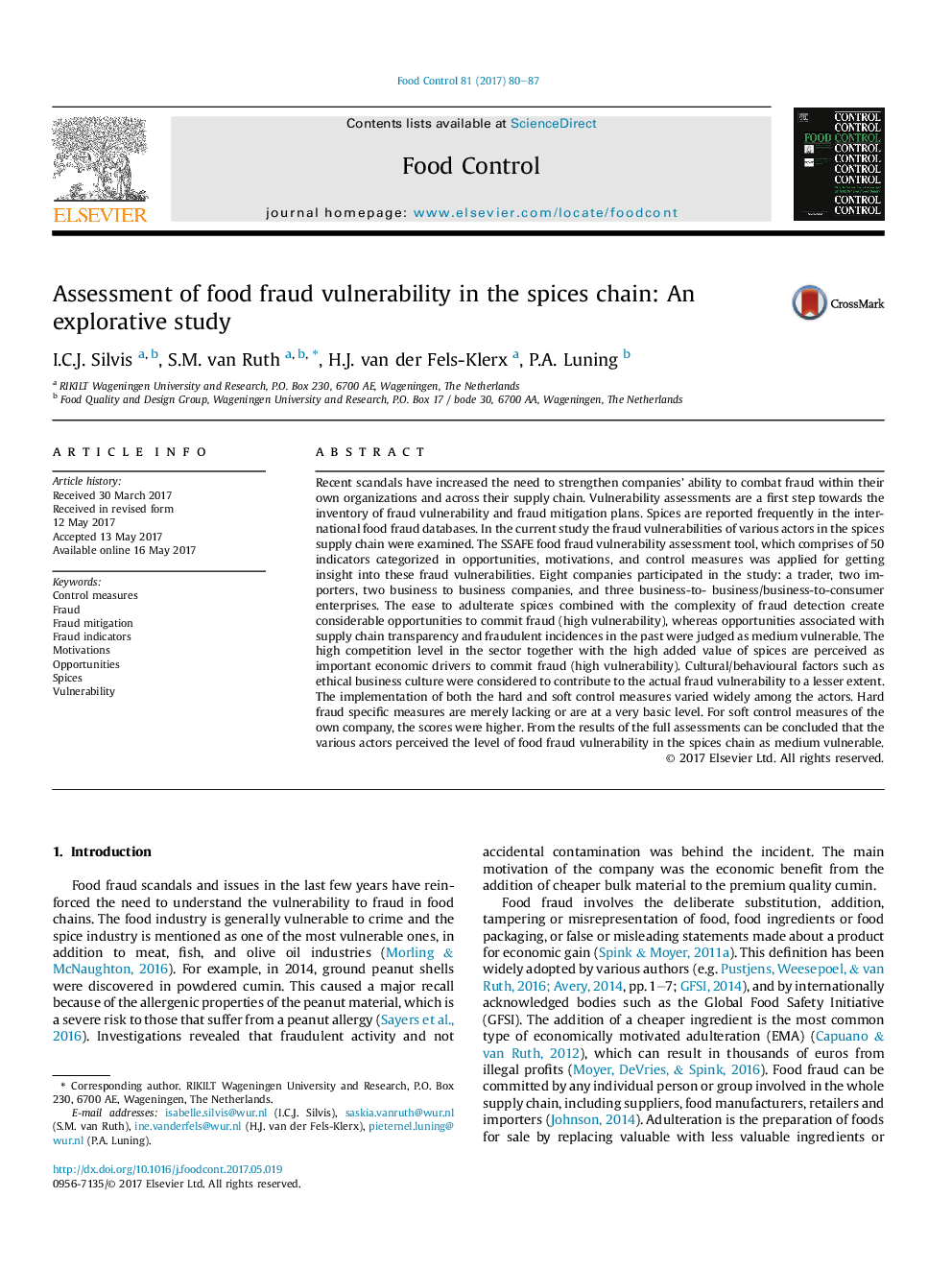| Article ID | Journal | Published Year | Pages | File Type |
|---|---|---|---|---|
| 5767182 | Food Control | 2017 | 8 Pages |
â¢Fraud assessment reveals vulnerabilities due to opportunities, motivations, and controls.â¢Interviewed spice chain actors assigned food fraud vulnerability overall as medium.â¢Key risks are simple adulteration, detection difficulty, price and market competition.â¢Hard fraud mitigation vary considerably among interviewed spice actors.
Recent scandals have increased the need to strengthen companies' ability to combat fraud within their own organizations and across their supply chain. Vulnerability assessments are a first step towards the inventory of fraud vulnerability and fraud mitigation plans. Spices are reported frequently in the international food fraud databases. In the current study the fraud vulnerabilities of various actors in the spices supply chain were examined. The SSAFE food fraud vulnerability assessment tool, which comprises of 50 indicators categorized in opportunities, motivations, and control measures was applied for getting insight into these fraud vulnerabilities. Eight companies participated in the study: a trader, two importers, two business to business companies, and three business-to- business/business-to-consumer enterprises. The ease to adulterate spices combined with the complexity of fraud detection create considerable opportunities to commit fraud (high vulnerability), whereas opportunities associated with supply chain transparency and fraudulent incidences in the past were judged as medium vulnerable. The high competition level in the sector together with the high added value of spices are perceived as important economic drivers to commit fraud (high vulnerability). Cultural/behavioural factors such as ethical business culture were considered to contribute to the actual fraud vulnerability to a lesser extent. The implementation of both the hard and soft control measures varied widely among the actors. Hard fraud specific measures are merely lacking or are at a very basic level. For soft control measures of the own company, the scores were higher. From the results of the full assessments can be concluded that the various actors perceived the level of food fraud vulnerability in the spices chain as medium vulnerable.
